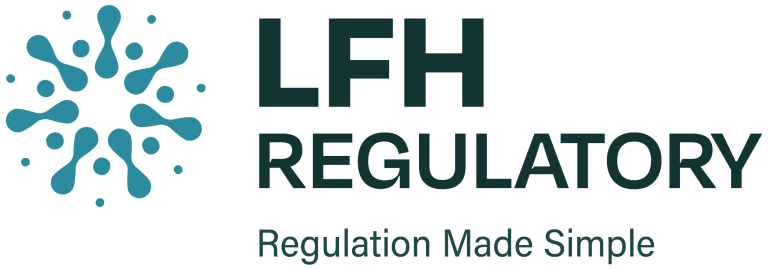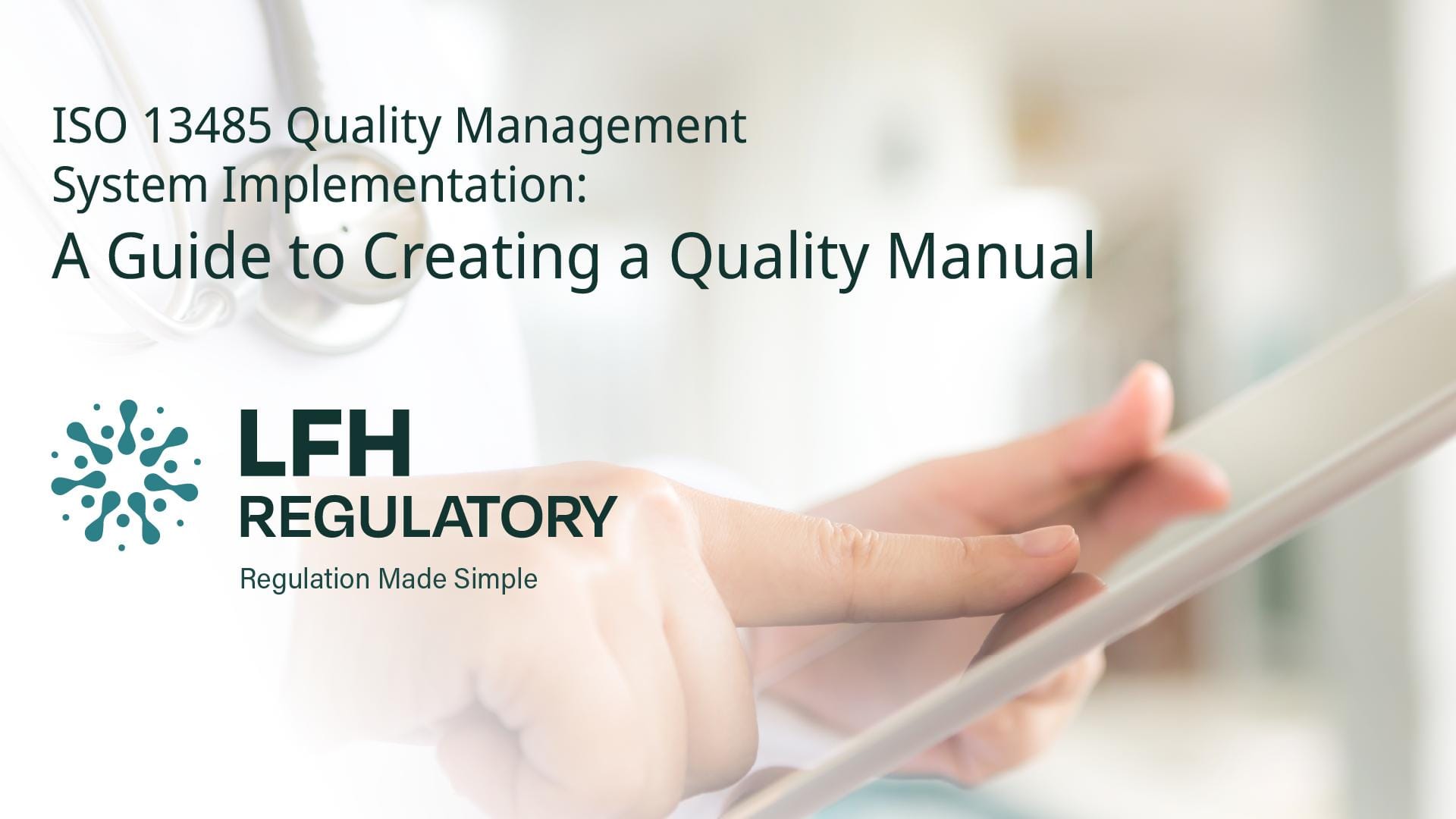ISO 13485 is an international standard that outlines the requirements for a quality management system (QMS) for organisations involved in the design, development, production, installation, servicing, sales, and distribution of medical devices (including in vitro diagnostics). Clause 4.2.2 of the standard requires the organisation to document a quality manual.
What is a Quality Manual?
A quality manual is one of the key documents in an ISO 13485-compliant QMS. Many organisations choose to create one to document and communicate their quality management system, including how they meet regulatory and customer requirements.
Non-Applicable Clauses
Under ISO 13485:2016, organisations can declare certain clauses as non-applicable if they are not relevant to their scope of activities. However, any non-applicable clause must be justified and documented within the quality manual. These justifications are subject to audit.
Commonly Declared Non-Applicable Clauses:
- Clause 7.3: Design and Development — Not relevant if the company does not design its own products.
- Clause 7.5.3: Installation Activities — Not required if the product does not require on-site installation.
- Clause 7.5.4: Servicing Activities — May not apply if no servicing or calibration is offered.
- Clause 7.6: Control of Monitoring and Measuring Equipment — Could be excluded if no relevant measuring equipment is used.
What Content is Required in a Quality Manual
The structure of a quality manual may vary, but it must reflect the organisation’s actual QMS. Below is a sample format:
Table 1: Example Quality Manual Format
Each section should reference applicable procedures and records. Organisations may choose to include these documents within the manual or maintain them separately.
| Section no. | Section title | Information that sits under this section |
| 1 | Introduction | · The purpose of the QMS and the quality manual.· Company overview.· Scope of the QMS.· Details of any non-applicable clauses including justifications |
| 2 | Quality Policy | · A statement of the organisation’s commitment to quality.· Objectives related to quality.The quality policy and objectives may also be separate documents which are referenced to within this section of the quality manual. |
| 3 | Organisation Structure and Responsibilities | · Description of the organisational structure including an organisation chart/organogram.· Roles and responsibilities for quality management, including information on who the management representative is and who the Person Responsible for Regulatory Compliance (PRRC) is, if product is being sold into the EU market.The organisation chart may also be separate document which is referenced to within this section of the quality manual. |
| 4 | Documentation Control | · Procedures for controlling documents and records.· Document approval and revision processes.Procedures for document and record control and change control should be referenced here. |
| 5 | Management Responsibility | · Top management commitment.· Customer focus.· Quality planning.Procedure for Management Review should be referenced here. |
| 6 | Resource Management | · Human resources.· Infrastructure and work environment.· Work Environment and Contamination ControlProcedures for Management Review, Infrastructure, Maintenance Activities, Work Environment, Contamination Control and Training, Competency and Awareness should be referenced here. |
| 7 | Product Realisation | · Planning of product realisation.· Design and development (if applicable).· Customer-related processes.· Purchasing and supplier management.· Production and service provision.· Validation activities.· Servicing and Installation.· Particular requirements for sterile products.· Identification, traceability.· Labelling and preservation of product.Procedures for Design and Development (Design control), Risk Management, Sales Order Processing, Purchasing, Supplier Evaluation, Acceptance Activities, Production Control, Post-Market Surveillance, Usability, Clinical Evaluation, Conformity Assessment and Classification, Economic Operators, Servicing Activities, Installation Activities, Sterilisation Validation, Software Validation, Identification and Traceability, Labelling, Preservation of Product and Equipment Control should be referenced here (this is not an exhaustive list and will depend on the product type). |
| 8 | Measurement, Analysis, and Improvement | · Monitoring and measurement of processes· Monitoring and measurement of product· Control of nonconforming product· Analysis of data for continual improvement· Corrective and preventive actionsProcedures for Monitoring and Measurement (Data analysis), Complaint Handling, Nonconforming Product, Rework, Vigilance Reporting, FSCA and FSN, Corrective and Preventive Action, Internal, External and Supplier Audits should be referenced here. |
Final Thoughts…
Before finalising the quality manual, review the specific requirements of ISO 13485 and ensure the document reflects your actual QMS. Regular reviews and updates are essential to maintain compliance.
Still Unsure What to Do? LFH Regulatory Can Help…
If you need support creating, implementing, or updating your QMS, our experts are ready to help. Contact us today at +44 1484 662575 or via info@lfhregulatory.co.uk.
References
- EN ISO 13485:2016+A11:2021 Medical devices – Quality management systems – Requirements for regulatory purposes.
- ISO 13485:2016 Medical devices. Advice from ISO/TC 210. A Practical Guide.
Frequently asked questions for ISO 13485 Quality Management System Implementation
What is a quality manual in ISO 13485?
A quality manual is a key document that describes how an organisation’s quality management system (QMS) meets ISO 13485 requirements. It outlines scope, policies, responsibilities, procedures, and any non-applicable clauses.
Is a quality manual required for ISO 13485 compliance?
Yes. Clause 4.2.2 of ISO 13485 requires organisations to maintain a documented quality manual as part of their QMS.
Which clauses can be declared non-applicable in ISO 13485?
Common exclusions include:
Clause 7.3 Design and Development (if you don’t design products)
Clause 7.5.3 Installation (if products don’t need on-site installation)
Clause 7.5.4 Servicing (if no servicing is provided)
Clause 7.6 Control of Measuring Equipment (if not relevant)
All exclusions must be justified and documented in the manual.
What information must be included in an ISO 13485 quality manual?
A quality manual typically includes:
Introduction, scope, and non-applicable clauses
Quality policy and objectives
Organisation structure and responsibilities
Document and record control procedures
Management responsibilities
Resource management
Product realisation (including design, purchasing, production, servicing)
Measurement, analysis, and improvement processes
Can procedures be included directly in the quality manual?
Yes. Some organisations include detailed procedures within the manual, while others reference them as separate controlled documents. Either approach is acceptable if it reflects the actual QMS.
How often should an ISO 13485 quality manual be reviewed?
The quality manual should be reviewed regularly to ensure it reflects current processes and regulatory requirements. Updates are often required after audits, process changes, or regulatory updates.
Who is responsible for the ISO 13485 quality manual?
Top management is ultimately responsible, but day-to-day oversight is usually delegated to the management representative or the Person Responsible for Regulatory Compliance (PRRC) if selling in the EU.
What happens if my quality manual is incomplete or inaccurate?
During an ISO 13485 audit, an incomplete or poorly documented quality manual can lead to nonconformities, delays, or even failure to achieve certification.



